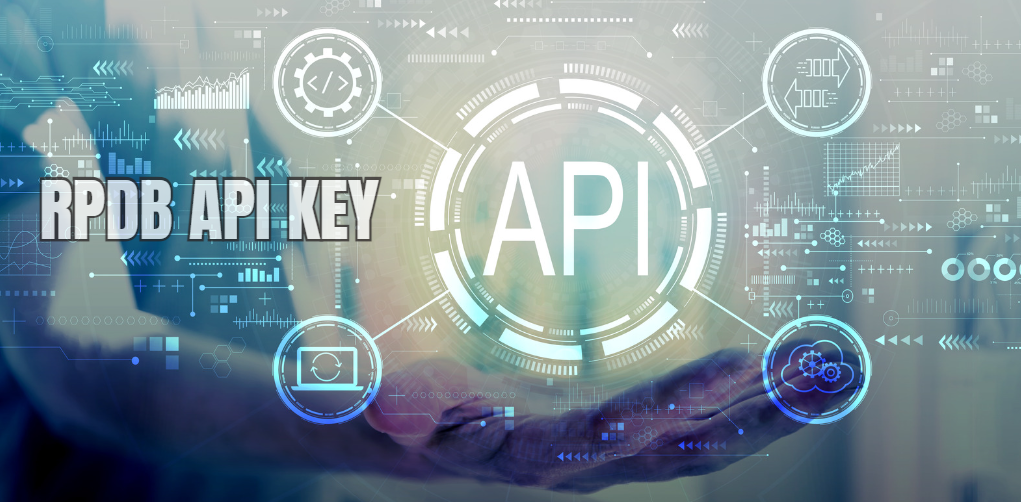Contents
Introduction
In the evolving landscape of digital technology, Application Programming Interfaces (APIs) play a critical role in enabling various software systems to interact seamlessly. Among the myriad of APIs available, the RPDB API key stands out due to its specific functionalities and applications.
This comprehensive guide will delve into the RPDB API key, its significance, how to obtain and use it, and its impact on the broader tech ecosystem.
What is the RPDB API Key?
1.1 Definition and Purpose
An RPDB API key is a unique code provided to users who subscribe to the RPDB service. This key grants access to the RPDB API, which is essential for interfacing with the RPDB database and utilizing its services. RPDB, which stands for “Remote Procedure Database,” offers a range of functionalities, including data retrieval, management, and integration.
1.1.1 Role of API Keys
API keys serve as a security mechanism to authenticate and authorize users. They ensure that only those with valid credentials can access the API and its associated services. For RPDB, the API key facilitates secure and efficient access to its database.
1.1.2 Importance in Digital Ecosystems
The RPDB API key is crucial for developers, businesses, and organizations that rely on RPDB for data management and integration. It enables seamless communication between the RPDB database and various applications, enhancing overall functionality and user experience.
1.2 Features of the RPDB API Key
The RPDB API key comes with several features that enhance its utility and effectiveness.
1.2.1 Authentication and Authorization
The primary function of the RPDB API key is to authenticate and authorize users. By validating the key, RPDB ensures that only legitimate requests can access its services.
1.2.2 Rate Limiting
RPDB may implement rate limiting to manage the number of requests a user can make within a specific period. This feature prevents abuse and ensures fair usage of the API.
1.2.3 Access Control
The API key also helps in controlling access to different functionalities within the RPDB system. Depending on the user’s subscription level or permissions, the API key can grant varying degrees of access.
How to Obtain an RPDB API Key
2.1 Subscription and Activation
To obtain an RPDB API key, users must subscribe to the RPDB service. The process is straightforward and typically involves the following steps:
2.1.1 Subscription
Users need to select a suitable subscription plan based on their requirements. RPDB offers various plans, each with different features and levels of access.
2.1.2 Key Issuance
Once the subscription is processed, RPDB issues the API key via email within approximately five minutes. This email contains the key and instructions for its use.
2.1.3 Accessing the Key
After the initial activation, users can log in with their Patreon account to view or retrieve their API key at any time. This convenience ensures that users always have access to their key when needed.
2.2 Troubleshooting Key Issues
In case of issues with the API key, users can follow these steps:
2.2.1 Key Not Received
If the API key is not received within the expected timeframe, users should check their email’s spam or junk folder. If it’s still not found, contacting RPDB support for assistance is advisable.
2.2.2 Invalid Key
If users encounter issues with an invalid key, they should verify that they are using the correct key and that it has not expired or been revoked. In case of continued problems, reaching out to RPDB support is recommended.
Using the RPDB API Key
3.1 Integration and Implementation
Integrating the RPDB API key into applications involves several steps, ensuring smooth and secure access to RPDB services.
3.1.1 API Documentation
RPDB provides comprehensive documentation that guides users on how to use the API key effectively. This documentation includes details on endpoints, request formats, and response structures.
3.1.2 Authentication Process
When making API requests, users must include their API key in the request headers or parameters. This step authenticates the request and grants access to the desired data or functionality.
3.1.3 Example Use Cases
- Data Retrieval: Developers can use the RPDB API key to retrieve data from the RPDB database for various applications, such as analytics or reporting.
- Integration: Businesses can integrate RPDB services into their systems, enhancing functionality and data management capabilities.
3.2 Best Practices for API Key Usage
Ensuring the secure and efficient use of the RPDB API key involves adhering to best practices.
3.2.1 Secure Storage
API keys should be stored securely to prevent unauthorized access. Avoid hardcoding keys into source code and consider using secure storage solutions.
3.2.2 Regular Rotation
Regularly rotating API keys helps maintain security and mitigate risks associated with potential key exposure or misuse.
3.2.3 Monitoring Usage
Monitoring API key usage helps detect unusual activity or potential abuse. Implementing logging and alerting mechanisms can aid in proactive management.
Impact of RPDB API Key on Businesses and Developers
4.1 Enhancing Efficiency and Productivity
The RPDB API key significantly impacts businesses and developers by enhancing efficiency and productivity.
4.1.1 Streamlined Data Access
By providing a direct interface to the RPDB database, the API key streamlines data access and management processes. This efficiency is particularly valuable for businesses that rely on real-time data.
4.1.2 Improved Integration
RPDB’s API facilitates seamless integration with other systems and applications. This capability enables businesses to create more cohesive and functional technology ecosystems.
4.2 Challenges and Considerations
While the RPDB API key offers numerous benefits, there are challenges and considerations to address.
4.2.1 Security Risks
Managing API keys involves addressing security risks such as key exposure or unauthorized access. Implementing robust security measures is crucial to mitigate these risks.
4.2.2 Compliance and Regulations
Businesses must ensure that their use of the RPDB API key complies with relevant regulations and data protection laws. This consideration is vital for maintaining legal and ethical standards.
The Future of RPDB and API Keys
5.1 Emerging Trends and Innovations
The landscape of APIs and digital technology is continually evolving, and RPDB is likely to adapt to emerging trends.
5.1.1 Advanced Security Features
Future updates to the RPDB API may include advanced security features such as enhanced encryption and multi-factor authentication to bolster protection.
5.1.2 Expanded Functionalities
RPDB may expand its API functionalities to include new features and services, further enhancing its value for users and developers.
5.2 Strategic Developments
RPDB’s strategy will likely focus on enhancing user experience, expanding its service offerings, and integrating new technologies to maintain its competitive edge.
FAQs About RPDB API Key
6.1. What is an RPDB API key?
An RPDB API key is a unique code issued to users who subscribe to the RPDB service. It provides authenticated access to the RPDB API, enabling interaction with its database and services.
6.2. How can I obtain an RPDB API key?
To obtain an RPDB API key, you need to subscribe to the RPDB service. After subscription, the API key is sent to you via email within approximately five minutes. You can also access the key through your Patreon account.
6.3. What should I do if I don’t receive my API key?
If you do not receive your API key within the expected timeframe, check your email’s spam or junk folder. If it is still missing, contact RPDB support for assistance.
6.4. How do I use the RPDB API key?
To use the RPDB API key, include it in the request headers or parameters when making API calls. This step authenticates your request and grants access to RPDB services.
6.5. What are some best practices for managing API keys?
Best practices for managing API keys include securely storing them, regularly rotating them, and monitoring their usage to prevent unauthorized access and ensure security.
6.6. What future developments can we expect for RPDB API keys?
Future developments for RPDB API keys may include advanced security features and expanded functionalities, aimed at improving user experience and integrating new technologies.
Conclusion
The RPDB API key is a vital component in the realm of digital technology, offering secure and efficient access to the RPDB database. Its role in facilitating data retrieval, integration, and management is invaluable for businesses and developers alike.
As technology continues to evolve, the RPDB API key will likely adapt to meet new challenges and opportunities, maintaining its significance in the digital landscape. Understanding how to obtain, use, and manage this key effectively is essential for leveraging its full potential and ensuring a seamless and secure experience.













































